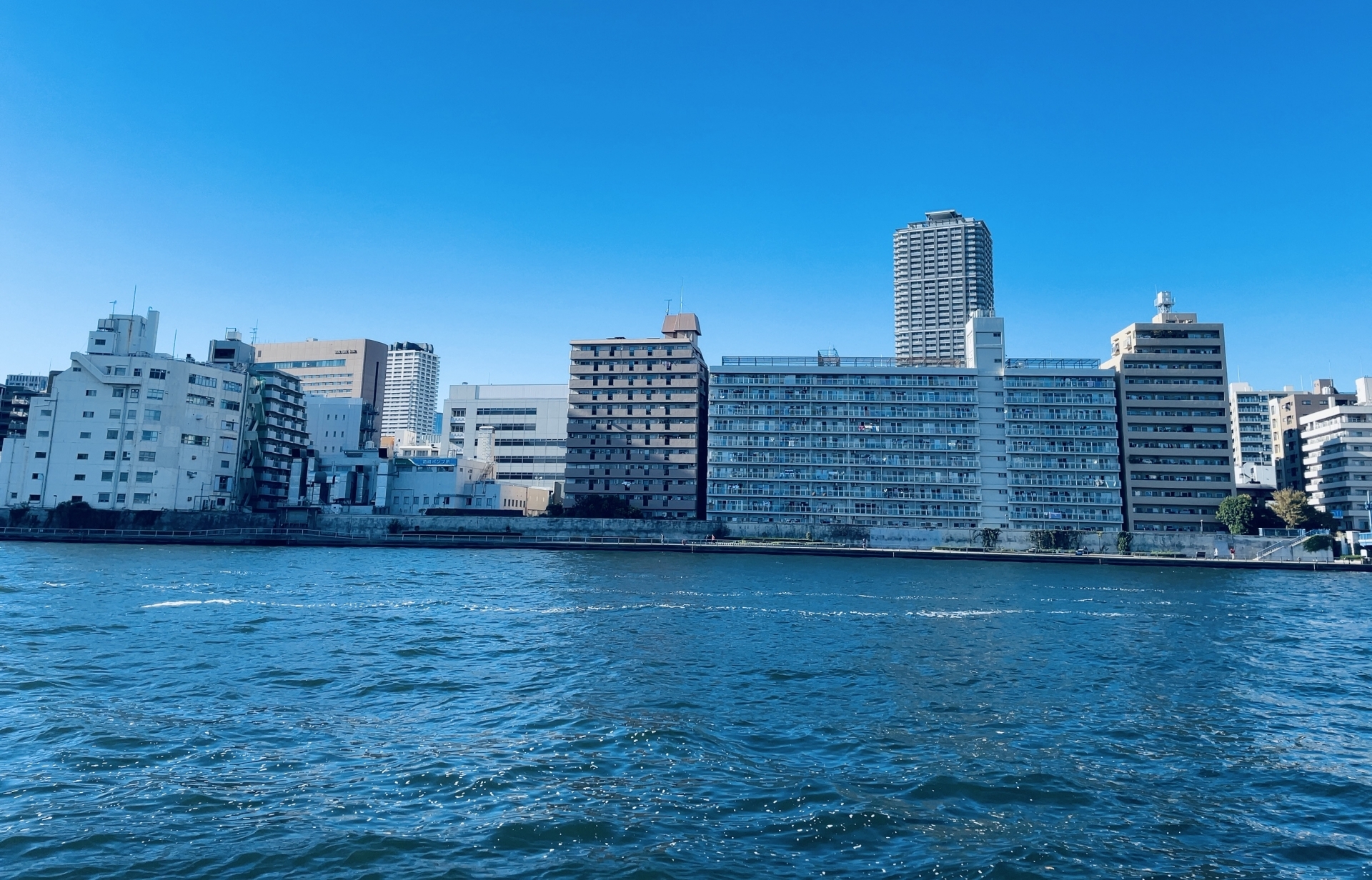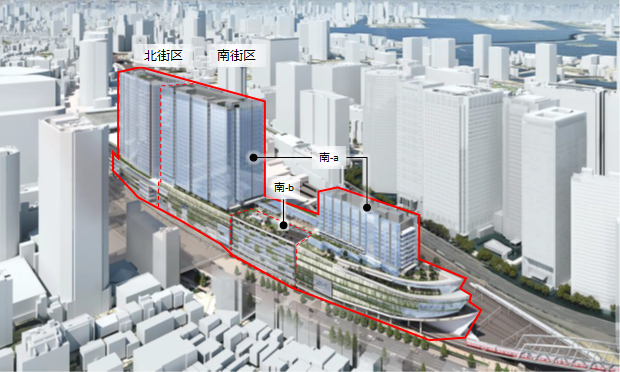For those who are considering the purchase or sale of real estate, theright-of-way obligation is an important legal requirement that cannot be avoided. If you conduct a land transaction without understanding this obligation, you may face a serious problem of not being able to build a building on the land you have purchased because the building permit application will not be approved.
The right-of-way obligation is a legal requirement stipulated in Article 43 of the Building Standards Law, which states that a site must have a certain level of access to a road before a building can be constructed. Land that does not meet this requirement is anon-reconstructable property, which in principle prohibits the reconstruction of existing buildings and the construction of new buildings.
With land prices soaring in recent years, especially in urban areas, many people are attracted to land that is less expensive than the market price. However, there are cases where a serious problem of violation of road access obligation is hidden behind the low price. In particular, there are many properties that do not meet the road access obligation in narrow lots, land at the end of an alley, or in a corner of an old residential area.
In this article, based on our many years of experience in the real estate industry as INA&Associates, we will explain the basic structure of the right-of-way obligation and practical points to be noted in an easy-to-understand manner for the average consumer. We will also provide detailed explanations of exceptions such asmatters to be checked when purchasing land, the necessity ofsetbacks, and theproviso in Article 43 to help ensure that your real estate transactions are safe and appropriate.
Investing in real estate or purchasing a home is an important life decision. By acquiring the correct knowledge of right-of-way obligations, you will be able to avoid future problems and proceed with real estate transactions with peace of mind.
Basic Knowledge of Right-of-Way Obligations
Definition and Legal Basis of Right-of-Way Obligation
The right-of-way obligation is a legal requirement clearly stipulated in Article 43, Paragraph 1 of the Building Standards Law. The article stipulates that "the site of a building must be at least 2 meters from a road," and this provision applies to all buildings in city planning areas and quasi-city planning areas.
Behind this legal requirement lies an important policy objective: the development of urban planning during the postwar reconstruction period and the improvement of the living environment in the wake of rapid urbanization. The Building Standard Law was enacted in 1950, at a time when Japan was in the midst of reconstruction from the war, and the deterioration of the urban environment due to unregulated building practices was a serious social problem. The introduction of the right-of-way obligation was intended to ensure a minimum level of urban infrastructure and living environment.
Specifically, a site must have a frontage of at least 2 meters on a road with awidth of at least 4 meters asdefined in Article 42 of the Building Standards Law. This "2 meters or more" requirement was set in consideration of emergency vehicle access and the need to secure an evacuation route in the event of a disaster.
However, there are some exceptions to the obligation to provide access to a road. Under the "Permission under the proviso of Article 43" based on Article 43, Paragraph 2, Item 2 of the Building Standard Law, the road access obligation may be relaxed if the specific administrative agency deems that there is no impediment to traffic, safety, fire prevention, or sanitation. This exception is provided as a practical measure in existing urban areas, and is applied after obtaining the consent of the Architectural Review Board and considering individual circumstances.
Reasons why the right-of-way obligation is necessary
The main reasons why street access is legally required are to ensure public safety and to maintain urban functions. This requirement is not merely a building administrative procedure, but functions as an important safety device to protect the lives and property of residents.
The first reason is toensure the passage of emergency vehicles. In emergency situations such as fire or sudden illness, rapid access to the scene by fire engines and ambulances is critically important in preventing the spread of damage and saving lives. The width of a fire pump truck is approximately 2.0 meters, that of an ambulance approximately 1.9 meters, and that of a large ladder truck approximately 2.5 meters. The minimum frontage of 2 meters required by the road access obligation has been set as the minimum width for these emergency vehicles to pass.
| Types of Emergency Vehicles | Vehicle width | Main Purpose of Use |
| Fire pump truck | Approx. 2.0 meters | Fire extinguishing and rescue operations |
| Ambulance | Approx. 1.9 meters | Transport of injured and sick, first aid |
| Large ladder truck | Approx. 2.5 meters | Rescue at high places, fire fighting in high-rise buildings |
| Chemical fire truck | Approx. 2.3 meters | Responds to fires involving hazardous materials |
The second reason is tosecure evacuation routes in the event of a disaster. In Japan, where natural disasters such as earthquakes and typhoons occur frequently, it is extremely important to secure safe evacuation routes for residents. Especially in densely built-up areas, the risk of evacuation routes being blocked by collapsed buildings or spreading fire is high, and the road space secured by the roadside access obligation is a lifeline.
As the experiences of the Great East Japan Earthquake and the Great Hanshin-Awaji Earthquake have shown, the importance of evacuation routes in times of disaster is immeasurable. The two-meter or more frontage secured by the roadside access obligation serves as the minimum width that allows a wide variety of residents, including wheelchair users and the elderly, to evacuate safely. In the event of a disaster, the paths can be used not only for evacuation, but also as access for bringing in relief supplies and for restoration work, making them of great social significance.
What is a road under the Building Standard Law?
The concept of "road" as defined in Article 42 of the Building Standards Law is important to understand the obligation of tangent. Since roads in everyday use do not necessarily correspond to roads under the Building Standard Law, an accurate understanding of this difference is extremely important in real estate transactions.
Article 42 of the Building Standard Law defines a road as "4 meters or more in width," and in areas designated by a specific administrative agency, a minimum of 6 meters is required. This width requirement is set in consideration of the safety of vehicles passing each other and pedestrians, in addition to ensuring the passage of emergency vehicles as mentioned above.
Roads under the Building Standard Law fall into the following six categories
| Types of Roads | Article 42 of the Building Standard Law | Description | Administrator |
| Road No. 1 | Paragraph 1, Item 1 | Roads (national, prefectural, municipal, etc.) according to the Road Act | National, prefectural and municipal governments |
| Road No. 2 | Paragraph 1, Item 2 | Roads constructed through development activities, etc. | Developers, municipalities, etc. |
| Road No. 3 | Paragraph 1, Item 3 | Roads existing at the time of application of the Building Standard Law | Various |
| Road No. 4 | Paragraph 1, item 4 | Roads scheduled for project execution within 2 years | Project Entity |
| Road No. 5 | Paragraph 1, item 5 | Location-designated road (private road) | Private |
| Paragraph 2 road | Paragraph 2 | Deemed road (less than 4 meters wide) | Various |
Of these, the one that requires special attention is theSection 2 road(deemed road). When building on a lot that borders a 2-paragraph road, asetbackof 2 meters from the center line of the road is required, and this is an important point to check when purchasing land. This is an important point to be confirmed when purchasing land.
Risks and Countermeasures for Violation of Right-of-Way Obligations
What is a property that cannot be rebuilt?
Land that does not meet the right-of-way obligation is classified as a non-reconstructible property, which in principle prohibits the reconstruction of existing buildings and the construction of new buildings. Since this restriction has a significant impact on the property value of real estate, a thorough investigation before purchasing the land is essential.
Typical cases of non-reconstructible properties include the following situations. First, there are lots that do not abut a road at all, so-called "roadless lots. This is a situation where the land is landlocked, surrounded by other land, and access to a public road must be through someone else's land. On such land, the application for a building permit will not be accepted, and any new building activity will not be permitted.
Next, there are lots with less than 2 meters of frontage to the road. This problem is often seen in "flagpole lots" or "lot extensions," where a building is built at the back but the width of the road-facing portion is too narrow to meet the road frontage obligation. On such a lot, rebuilding will not be possible unless the frontage is widened.
In addition, land that borders a road other than the road stipulated in the Building Standard Law is also a non-reconstructable property. For example, land that borders an agricultural road, forest road, or river management road will be judged as not satisfying the road access obligation if these do not fall under the roads stipulated in Article 42 of the Building Standard Law. On such land, building activity will not be allowed unless the adjacent road is certified as a road under the Building Standard Law.
The impact on real estate values of non-reconstructible properties is serious. In general, the market value of a non-reconstructible property tends to be 30% to 50% lower than that of a buildable lot in the same condition. This is mainly due to use restrictions resulting from the inability to rebuild in the future and the difficulty in obtaining financing from financial institutions. The lower valuation of the collateral value for a mortgage loan significantly limits the options available to prospective buyers.
However, even non-reconstructible properties can be renovated or repaired. The Building Standard Law does not restrict construction work for the maintenance and preservation of existing buildings, so interior renovations, equipment upgrades, and exterior wall repairs can be carried out. However, large-scale renovations that involve additions or structural changes are not allowed, thus limiting the ability to make fundamental improvements to the building.
Setback Mechanism
Setback is a road setback that is required for building activities on sites bordering a 2-way road. This system is established for the purpose of widening the road width to 4 meters or more in the future, and plays an important role in urban planning.
The basic mechanism of the setback is that an area of 2 meters from the center line of the road is considered a road, and the installation of buildings and structures is prohibited. For example, if the current road width is 3 meters, 1.5 meters from the center line of the road is the existing road portion, but after the setback, the road width will be 2 meters from the center line, for a total of 4 meters.
The ownership of the land within the required setback area will remain with the original landowner after the setback. However, since this area is considered a "road" under the Building Standards Law, it is prohibited to install buildings, fences, gates, or other structures. In addition, the use of the land as a parking lot may also be restricted, making it a special type of land that has a public character even though it is effectively private property.
The economic burden associated with setbacks is another important factor to consider. Because setbacks reduce the available site area, they limit the size of buildings that can be constructed. In addition, if there are existing fences, gates, plantings, etc. within the setback area, the cost of removing them will be incurred. Furthermore, pavement and maintenance of the setback area may be handled differently by each municipality, so advance confirmation is required.
On the other hand, setbacks also have the aspect of improving the overall benefit to the community. Widening the width of the road improves access for emergency vehicles and serves as an evacuation route in the event of a disaster. In addition, it can be expected to improve sunlight, ventilation, and landscaping, which may contribute to the long-term improvement of the real estate value of the area.
Permission under the proviso of Article 43
The "Article 43 proviso permit"based on Article 43, Paragraph 2, Item 2 of the Building Standards Actis an important system that allows construction under specific conditions as an exception to the right-of-way obligation. This permit system was established to respond to the realistic situation of existing urban areas and, if properly utilized, may solve the problem of properties that cannot be reconstructed.
The basic requirement for a permit under the proviso of Article 43 is that the specific administrative agency must find that there are "no impediments to traffic, safety, fire prevention, or sanitation. This determination is made with the consent of the Architectural Review Board, and is based on comprehensive consideration of individual site conditions and the surrounding environment. During the permit review, evacuation routes, accessibility for emergency vehicles, and impact on the surrounding area are examined in detail.
Typical situations that would qualify for a permit include the following. First, there is a large vacant lot surrounding the site that does not substantially impede evacuation or emergency vehicle access. For example, if the site is adjacent to a park, river, or railroad right-of-way, a permit may be granted because these spaces serve as evacuation routes.
Second, the property may abut a road-like space such as a private road or farm road. Although these roads do not fall under the category of roads under the Building Standard Law, they may be eligible for a permit if they effectively function as roads and are appropriate in width and structure. In this case, however, an agreement must be reached among the parties concerned regarding the maintenance of the road-like space and the right of way.
The permit application process is complex and requires specialized knowledge and experience. Application documents include a detailed survey of the site, drawings showing the surrounding conditions, a traffic safety and fire prevention study, and a letter of consent from all parties involved. In addition, it often takes several months for the Architectural Review Board to deliberate on the application, and there is no certainty as to whether or not a permit will be granted.
Even if a permit is granted, certain conditions may be attached. For example, the use of the building may be limited to residential, the number of floors may be limited to two or less, and evacuation routes may have to be maintained. Since these conditions are prerequisites for approval, due attention should be paid when considering future land use plans.
Points to Consider When Purchasing or Selling Land
Items to check before purchase
Confirmation of the right-of-way obligation at the time of land purchase is extremely important to avoid future problems. For a successful real estate investment or home construction, it is essential to conduct a thorough investigation and accurately grasp the status of the right-of-way before signing a contract.
The first thing to check is the type of road that the subject land borders. It is necessary to accurately ascertain the classification of the road according to Article 42 of the Building Standard Law and to confirm that the road is a valid road for the building confirmation application. This confirmation can be made by using the "designated road map" available at the Building Guidance Section or City Planning Section of each municipality. The designated road map contains detailed information on the type, width, and date of designation of the road, and is a decisive document in determining the road's accessibility obligation.
The actual measurement of the road width is also an important confirmation. Since the width on the designated road map may not match the current width, it is strongly recommended to have a survey conducted by a professional surveyor. Particularly in old residential areas or narrow roads, a part of the road may be privately owned, or conversely, a part of private land may be used as a road. Under such circumstances, the implementation of boundary determination survey should also be considered since the boundary on the registry and the current situation may differ.
Measuring the frontage of the road is also an essential check. It is necessary to confirm by actual measurement that the width of the area facing the road is 2 meters or more, and to verify whether there are any obstacles to future building plans. In particular, it is important to confirm the frontage of flagpole lots and irregularly shaped lots by accurate measurement, as the frontage may be narrower than it appears. It is also important to confirm that any fences or structures on the boundary with the neighboring land do not extend beyond the actual site boundary.
Prior consultation forbuilding confirmation application is also an effective means of confirmation. If you have concrete plans for construction, you can prepare design drawings and consult with the building inspector or designated confirmation inspection agency in advance to confirm that there are no problems under the Building Standard Law, including road access obligations. This prior consultation can significantly reduce the risk of discovering after purchase that the property is unbuildable.
Investigation of rights-of-way is also an important factor. If the property is adjacent to a private road, it is necessary to confirm whether the right of way and excavation rights to the private road have been secured. A detailed investigation of the rights-of-way relationship is necessary to determine if there is a right-of-way agreement with the owner or management association of the private road, and to clarify how maintenance and management costs will be borne in the future. If part of the private road is owned by a third party, the relationship with that owner should also be confirmed.
Measures to be taken at the time of sale
The sale of land with issues related to right-of-way obligations requires more complicated measures than in a normal real estate transaction. However, by taking appropriate measures, it may be possible to sell even problematic land at a fair price.
In the sale of a non-reconstructible property, it is first important to accurately understand the current status of the property. It is necessary to formulate a sales strategy by conducting a detailed investigation in cooperation with experts to determine the specific details of the violation of the right-of-way obligation, the possibility of obtaining a permit under the proviso of Article 43, and the possibility of resolving the problem by purchasing the adjacent land. The results of this investigation can not only be used as explanatory material to the buyer, but also provide important information for setting an appropriate sale price.
The obligation to explain to the buyer is an extremely important legal responsibility for the seller. Under the Building Lots and Buildings Transaction Business Law, it is mandatory to clearly explain the status of road access obligations in the explanation of important matters, and failure to provide this explanation may result in liability for nonconformance with the contract. The contents to be explained include the fact that the road access obligation has been violated, whether or not re-construction is possible, the possibility of permission under the proviso of Article 43, and the necessity of setbacks.
Pricing should appropriately reflect the restrictions caused by the violation of the right-of-way obligation. Generally, a non-reconstructible property requires a price reduction of 30% to 50% compared to a buildable lot with the same conditions. However, it is important to set an appropriate price by comprehensively considering the location conditions, surrounding environment, and the possibility of solving the problem. Excessively low pricing may be to the detriment of the seller, while excessively high pricing may result in a prolonged sale period.
The choice of sales method is also an important strategic decision. In addition to a general sale through an intermediary, multiple options should be considered, including sale to a real estate buyer, sale to the adjacent landowner, and sale after obtaining the Article 43 proviso permit. In particular, it may be possible for the adjacent land owner to sell the property at a price higher than the market price because of the advantages of site expansion and shape improvement.
In setting contract terms, it is important to include appropriate covenants regarding road access obligations. For example, a covenant that makes the acquisition of permission under the proviso of Article 43 a condition precedent, a covenant that clarifies the division of the burden of setback costs, or a covenant that assumes that the problem will be solved by purchasing the adjoining land can be considered. These covenants allow both parties to the transaction to appropriately share the risk and prevent problems from arising.
Follow-up after the sale is also an important factor. In particular, it is important to establish an appropriate cooperative system with the buyer when ongoing measures are required after the sale, such as applying for permission under the proviso of Article 43 or negotiating with the neighboring land. Providing information and cooperating with procedures to the extent possible as a seller will help to resolve problems smoothly and maintain a good relationship.
Conclusion
Right-of-way obligations are an important legal requirement that cannot be avoided in real estate transactions, and understanding them and responding appropriately is the key to a successful real estate investment or home purchase. Based on the information explained in this article, we reiterate the following important points
First, the basic requirement of the right-of-way obligation is that the lot must be at least 2 meters from a road as defined in Article 42 of the Building Standards Law. Land that does not meet this requirement becomes a non-reconstructable property, which in principle prohibits rebuilding and new construction, thus seriously affecting the property value of the land. In particular, narrow lots and old residential areas in urban areas are often found to be in violation of the road access requirement, so a thorough investigation prior to purchase is essential.
Regarding setbacks, land bordering a 2-paragraph road is required to be set back 2 meters from the center line of the road, and the economic impact, such as a reduction in the usable site area and the cost of removing existing structures, must be fully considered. On the other hand, there are cases where exceptions to the road access requirement may be granted with the proviso in Article 43, so detailed study in cooperation with specialists is important.
When purchasing land, future problems can be avoided by thoroughly checking the road type using designated road maps, confirming the width and frontage by actual measurement, consulting in advance on building confirmation applications, and investigating rights-of-way relations. In addition, at the time of sale, an accurate understanding of the current situation, appropriate explanations to the buyer, proper pricing, and devising contract terms and conditions will ensure that even problematic land can be dealt with appropriately.
At INA&Associates, we can provide the best solution for each individual client's situation by utilizing our extensive experience and expertise in complex issues related to tangential obligations. A real estate transaction is one of life's most important decisions, and professional support is essential to its success. Please feel free to contact us if you have any questions or concerns regarding tangent obligations.
With "human resources" and "trust" at the core of our management, we are committed to providing ongoing support so that all of our clients can proceed with real estate transactions with peace of mind. Through a fusion of technology and human resources, we will take on the challenge of creating value that transcends the boundaries of the traditional real estate industry and contribute to the realization of a prosperous future for our clients.
Frequently Asked Questions
Q1: Is it absolutely impossible to build on land that does not meet road access obligations?
Even if the land does not meet the road access requirements, it may be possible to construct a building by obtaining "permission under the proviso of Article 43" based on Article 43, Paragraph 2, Item 2 of the Building Standards Act. This permission is granted when the administrative agency finds that there are no obstacles in terms of traffic, safety, fire prevention, or sanitation, and when the Architectural Review Board gives its consent.
The requirements for permission vary from municipality to municipality, but in general, permission is granted when there is a large vacant lot surrounding the site, when the site abuts a road-like space such as a private road or farm road, and when the consent of all rights holders abutting the passageway is obtained. However, detailed study in advance is important because applying for a permit requires specialized knowledge and time, and permission is not always granted.
Q2: Who owns the land in the setback area?
The ownership of the setback area remains with the original landowner after the setback. There is no change in the registered owner. However, since this area is considered a "road" under the Building Standards Law, it is prohibited to install buildings, fences, gates, or other structures.
In addition, since the setback area is supposed to function as a road, its use as a parking lot may also be restricted. Some municipalities may provide pavement maintenance for the setback area, but the cost burden and maintenance of the pavement should be confirmed in advance. It is important to understand that while the land is effectively private property, it is a special kind of land with a public character.
Q3: What about the right-of-way obligation when the property borders a private road?
Even if the property abuts a private road, if the private road has been designated by the specified administrative agency as a "designated road" under Article 42, Paragraph 1, Item 5 of the Building Standard Law, the obligation to provide access to the road can be satisfied. A designated road is a road that is constructed as a private road, is at least 4 meters wide, meets appropriate structural standards, and has been designated by a specified administrative agency.
On the other hand, a private road that has not been designated as such is not considered a road under the Building Standards Law, and is therefore considered to not meet the obligation to provide access to the road. In this case, measures such as obtaining permission under the proviso of Article 43 or securing access to the road under the Building Standard Law by purchasing the adjacent land are required. In the case of a private road, securing the right of way and excavation rights, as well as the burden of maintenance and management costs, are also important matters to be confirmed.
Q4: What should I do if I inherit a property that violates the right-of-way obligation?
If you inherit a property that is in violation of the right-of-way obligation, it is important to first accurately understand the current situation. It is necessary to work with a specialist to investigate the details of the roadside conditions, the possibility of obtaining permission under the proviso of Article 43, and the possibility of resolving the situation by purchasing the adjoining land.
Possible solutions include remodeling and utilizing the property in its current state, obtaining permission under the proviso of Article 43 and rebuilding, purchasing the adjoining land to satisfy the road access obligation, and selling the property as a non-renovable property. Since each method has its advantages and disadvantages, it is important to determine the best option, taking into account the overall situation of the heirs and their future plans.
Q5: What should I be aware of when purchasing an adjoining lot to satisfy the right-of-way obligation?
When purchasing an adjoining lot to satisfy the right-of-way obligation, it is necessary to first confirm that the adjoining lot to be purchased is appropriately bordered by a road under the Building Standard Law. It is also important to verify that the entire lot after purchase will have a frontage of at least 2 meters to satisfy the street frontage obligation.
The key to success in negotiations with neighboring landowners is to make a proposal that also takes into account the benefits to the other party. In addition to price negotiation, a comprehensive study including boundary determination, registration procedures, tax treatment, etc. is necessary. In addition, when purchasing only a portion of the adjacent land, it is important to consider the shape and potential use of the remaining land and to be careful not to disadvantage the other party.
Reference Information
Related Laws and Regulations
Building Standard Law

Daisuke Inazawa
Representative Director of INA&Associates Inc. Based in Osaka, Tokyo, and Kanagawa, he is engaged in real estate sales, leasing, and management. He provides services based on his extensive experience in the real estate industry. Based on the philosophy that “human resources are a company's most important asset,” he places great importance on human resource development. He continues to take on the challenge of creating sustainable corporate value.

.png)













